Tokenomics represents the economic foundation that powers virtual worlds in blockchain-based gaming. This emerging field combines game theory, economics, and cryptocurrency principles to create sustainable digital economies where players can earn, trade, and invest. Within crypto games, tokenomics determines how value flows between participants, how scarcity is maintained, and how the gaming ecosystem can thrive long-term without collapsing under inflation or exploitation.
Supply and demand dynamics
At the heart of any functional virtual economy lies the careful balance between token supply and player demand. Game developers must design systems that continuously regulate this balance to prevent both hyperinflation and deflation, which can destroy player experiences and economic viability.Token supply mechanisms in virtual economies typically involve both inflationary and deflationary pressures. New tokens enter the ecosystem through player activities like completing quests, winning battles, or mining resources. Meanwhile, tokens leave circulation through various sinks such as crafting costs, marketplace fees, character upgrades, and land development. When these opposing forces achieve equilibrium, the virtual economy maintains stable token values that benefit new and veteran players.
Multi-token ecosystems
Many sophisticated crypto games implement dual or multi-token systems that serve different economic functions in virtual worlds. This approach helps separate various aspects of the game economy for better management and stability.
The most common model includes:
- Governance tokens – Finite supply, used for voting rights and ecosystem decisions
- Utility tokens – Used for in-game transactions and rewards
- Resource tokens – Represent in-game consumables or materials
- Property tokens – Represent ownership of virtual land or structures
- Collection tokens – Unique NFTs that represent characters or rare items
This separation allows developers to isolate economic pressures and prevent issues in one area from cascading throughout the ecosystem. For example, by keeping governance separate from utility tokens, speculation on voting rights doesn’t directly impact day-to-day gameplay costs. Similarly, the scarcity of collectable NFTs can be maintained without affecting the availability of basic resources needed for game progression.
Value creation mechanisms
Sustainable virtual economies must generate real value rather than operating as zero-sum systems where one player’s gain necessitates another’s loss. Game designers accomplish this through various mechanisms that create new value through player engagement and creativity.
- Player-generated content that enhances the game environment
- Resource transformation through crafting and development
- Strategic competition where skill creates additional value
- Environmental development that improves functionality
- Community building that increases the game’s overall appeal
These value creation mechanisms ensure that economic activity benefits the ecosystem rather than extracting value from it. When players can generate new assets through skilled play or creative contribution, the total value within the ecosystem can grow organically without requiring constant influxes of new players or capital.
This interoperability layer expands economic opportunities for players by allowing them to leverage assets across multiple platforms. Virtual land purchased in one metaverse might be compatible with characters from another game, while currencies might be swappable across ecosystems. As standards for cross-game compatibility mature, we can expect even greater fluidity between virtual economies, creating a more cohesive blockchain gaming landscape.

